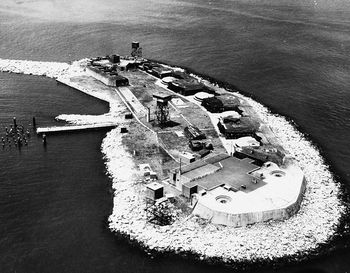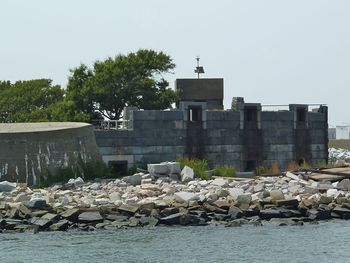Fort Wool (1)
|
Fort Wool (1) (1826-1946) - First named Fort Calhoun (1) and renamed Fort Wool in 1862 during the U.S. Civil War for Union General John E. Wool. Conceived in 1817 and built on an artificial island southeast of Fort Monroe. It served to guard Virginia's Hampton Roads harbor through World War II. It became a Hampton City Park in 1970.
HistoryPart of the Harbor Defense of Chesapeake Bay. Construction began on the artificial island in 1818 and by 1823 had raised the island to a height of six feet above high tide and construction of the fort itself was begun. Fort Wool was to have three tiers of casemates and a barbette tier ( 4 tiers designed to mount 232 guns). About half of the second casemate and one tier was completed when work stopped in 1830 because the island was sinking at a rate of eight inches a year. Additional stone was added to the island and work resumed on the casemates in 1858. The U.S. Civil War halted construction. 2nd Lt. Robert E. Lee was stationed at Fort Monroe between 1831 and 1834 and participated in the construction of both Fort Monroe and Fort Calhoun (Wool). Lee's participation in the construction of Fort Calhoun (Wool) was limited to tasks involving the addition of more stone to the island itself. His immediate supervisor was Captain Andrew Talcott who was in charge of construction at both forts.¹ Endicott PeriodFive Endicott Period gun batteries were built between 1902 and 1908. Four of the batteries were built as the main gun line facing north and the fifth battery faced south.
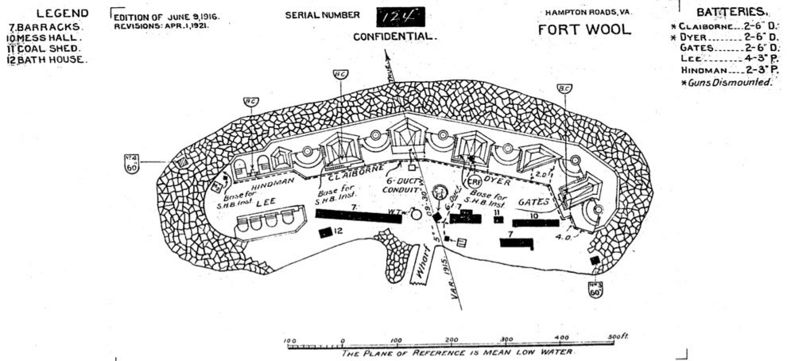
World War IFort Wool was garrisoned during World War I but the War in Europe caused a shift in armament. Battery Dyer and Battery Gates had their gun tubes shipped to other locations. The guns tubes in Battery Claiborne were shifted to Battery Gates. Battery Claiborne and Battery Dyer remained unarmed. World War IIFort Wool was garrisoned during World War II but all of the remaining armament was obsolete and construction began on a new 200 series battery in 1943. All of the obsolete guns were removed by 1943 except the two 3" guns in Battery Hindman. The new Battery 229 was completed in 1944 but was never armed because the threat had diminished. On 30 Sep 1943, an SCR-296A Radar set installation was accepted for service to provide radar fire control for the yet to be completed Battery 229. The location of the radar set was on the west end of the island just outside the fort walls.
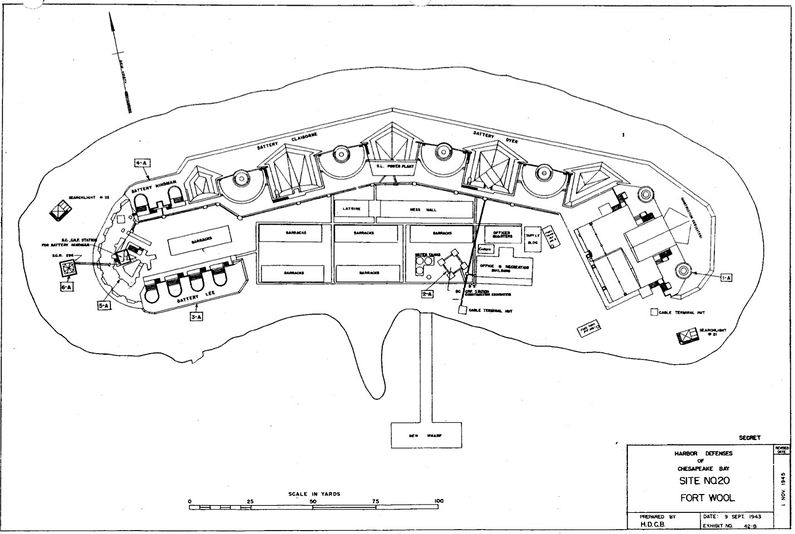
ClosureFort Wool was decommissioned and given to the State of Virginia in 1967. In 1970 the City of Hampton developed it into a park. Current Status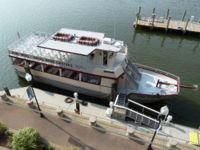 As a city park, the fort was accessed by daily tour boat trips from Hampton on the Miss Hampton II tour boat until the park reverted back to the State of Virginia control. On 2 May 2020 Terry McGovern of the CDSG reported:
See Also: Sources:
Links:
Visited: 23 Jul 2010
| ||||||||||||||||||||||||||||||||||||||||||||||||||||||||||||||||||||||||||||
